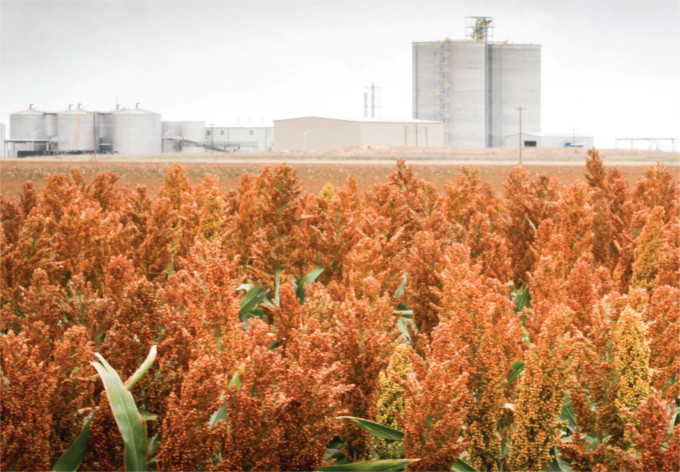Ethanol plants used 145 million bushels of a 597 million-bushel sorghum crop during the 2015/16 marketing year. This record utilization followed the previous year in which ethanol plants, unable to compete with extraordinary Chinese demand, used only 15 million bushels of a 433 million-bushel crop. What will the the 2016/17 marketing year bring? Stellar environmental will result in high sorghum production again this market year, and USDA currently projects ethanol plants will once again use a substantial portion, 125 million bushels of a 488 million-bushel crop.
Strong demand from ethanol plants is welcome news for producers given the size of the grain piles in the Plains and the Midwest. Their participation is essential in the current economy, making now a good time to check the health of the ethanol industry.
That price of crude oil is lower than a just a few years ago is no secret. The oil industry has struggled since 2014 and, as a result, producers have likely seen drops in the prices of key inputs. The question remains, however, will the benefits of lower fuel and fertilizer costs be outweighed by negative fuel market effects on the ethanol industry? At the current time, low crude oil prices have not yet caused measurable damage to the industry, while recognizing ethanol plant profitability certainly could be higher.
Analysts comment extremes in commodity prices do not benefit any market participants in the long run, and I completely agree. Short run benefits are plentiful, on the other hand, and these often accrue to market participants in unexpected ways.
For example, lower fuel prices lead to more vehicular travel and higher gasoline consumption. The Energy Information Administration projects U.S. gasoline consumption will reach a record 143 billion gallons in 2016. Critics of the Renewable Fuel Standard often point to declining gasoline demand as a reason for not promoting biofuels, but lower fuel prices have reversed this trend. The good news for ethanol plants is the added demand has buoyed ethanol prices, holding them at a level where they can maintain profitability.
The summer driving season is not always profitable for ethanol plants. Grain prices often reach yearly highs on tightening supplies ahead of harvest, and slow or negative economic growth has rationed summer travel and gasoline consumption over the last decade. This year was different. According to Iowa State University, the typical Iowa ethanol plant earned 23 cents per gallon in July 2016 and during the summer saw greater sustained profitability than at any time since 2014.
Higher demand for gasoline has also eased concerns about the blend wall, or the effective maximum amount of ethanol that can be blended into gasoline. Analysts often estimate this amount to be approximately 10 percent of the total U.S. gasoline supply or 14.3 billion gallons in 2016. The blend wall was 13.3 billion gallons as recently as 2012, so the ethanol market has newfound headroom.
The nation’s 200 ethanol plants—with a combined annual capacity of 15 billion gallons—appreciate these extra billion gallons of potential blending demand and have responded by increasing production to record levels. This added supply will allow ethanol exports to climb above 800 million gallons, the highest amount since 2011. The timing could not be better as ethanol trade associations Growth Energy and the Renewable Fuels Association have recently joined USDA and others in historic trade missions aimed at building even greater international demand for U.S. ethanol.
It is safe to say the ethanol industry is in good health. Although grain prices are low, producers can be confident in knowing ethanol plants will likely be in the market for U.S. grain for many more years.
Chris's columns appear in Kansas Farmer magazine monthly. You can view this column published in the online edition here.

